Here in Canada, 2017 was a year of great significance.
While 2017 marked the 150th anniversary of the founding of Canada with its year-long celebrations, it also marked another, more somber event in Canadian history.
2017 marked the 100th anniversary of the World War One battle of Vimy Ridge in France. This was the first battle in which Canadian soldiers were the main fighting force for the Allied side. During this battle, which was a success for the Canadian Army, a little over 10,000 Canadian soldiers became casualties. Some consider this battle the time when Canada came into its own as a country.
In April 2017 several thousand Canadians made the pilgrimage to France to visit the Vimy Ridge Memorial in order to mark that anniversary. As part of a school group, my daughter was one of those that attended the ceremonies.
As mementos of that once in a lifetime experience, my daughter collected a series of commemorative coins during her time there. When she returned home I didn't want these reminders of this experience to merely languish in a cardboard box in a closet somewhere.
With this in mind, I wanted to create something special as a Christmas gift to my daughter - something that would showcase and protect the memories that she came home with.
With some extra wood that I had left over from previous projects and some "junk" electronic parts, I was able to build this curio box that would light up and showcase the treasures that it held within.
Step 1: What Do You Need to Make This
This project was mainly built with various electronic spare parts that I had hanging around in my junk drawer along with some extra wood that I had left over from previous projects. If you don't have your own junk drawer handy, a lot of the parts can be obtained from electronic suppliers like Digikey and your local lumber yard,
To make the curio box, you need to gather the following items:
Electronic Components:
- One 2"x2" perf board - I got mine at my local surplus store
- 12 White LED's - I got mine from salvaging them from a defunct string of Christmas lights
- Black and red hook up wire
- One On/Off push-button switch - I got mine from a scrapped desktop computer
- One 2 AA battery box - I also picked this up at my local surplus store.
- 2 AA batteries
Materials
- 11 inch X 11-inch piece of 3/4 inch Interior Plywood - for the bottom of the box
- 4 pieces of 12 inch X 3 inch X 1/2 inch Red Cedar - for the bottom sides of the box
- 4 pieces of 12.5 inch X 1.75 inch X 1/2 inch Red Cedar - for the bottom trim of the box
- 4 pieces of 12 inch X 2 inch X 1/2 inch Red Cedar - for the lid sides
- 4 pieces of 11 inch X 1 inch X 1/2 inch Red Cedar - for the lid top
- 4 pieces of 11 inch X 1/2 inch X 1/2 inch birch - for lid support
- 4 pieces of 11 inch X 1/2 inch X 1/2 inch birch - for supporting the glass in the lid
- 12 inches of 1/2 inch cedar for light mounts
- 12 inches of 1/2 inch birch for light mounts
- Two 1 inch brass hinges
- 11 inch X 11-inch piece of 1/4 glass
- One small brass clasp
- Spar Varnish - any clear varnish is fine - but I like the look that Spar Varnish gives
- Steel Wool
- Sandpaper
- Paint Brush
- Wood Glue and hot glue sticks
- Decoupage glue
- Velcro strips
- 2 pieces of 12 inch X 12 inch felt for the box liner - I got mine at my local craft store
Tools
- Miter Saw
- Router with a 1/2 inch straight bit and a 1/2 cove bit
- Table Saw
- Drill Press with 3/8 inch drill bit
- Variable speed drill or rotary tool with 5mm drill bit
- Soldering iron and solder
- Screwdriver
- Utility Knife
- Glass cutter
- Pliers
- Four 3 inch corner clamps
- Wood Clamps
- Hot glue gun
- Square or Ruler
- Wire Strippers Optional
Step 2: Rough Cutting the Pieces for the Box
In order to determine the appropriate size for our box, I first did a trial layout of the coins that I wanted to display within the box. Once I laid the display out in the style that I had wanted, I then measured the width and length of the coin arrangement,.
In my particular case, I felt an 11 inch X 11-inch display surface would work out well
To build the bottom part of the box, first start out by cutting out the following pieces from 1/2" red cedar with a table saw:
- Four - 14" X 3" pieces for the box bottom sides
- Eight -14" X 1.75" pieces for the bottom trim and the lid sides of the box
- Four -11" X 1" pieces for the lid top
Next cut out Four pieces of 12" X 1/2" of 1/2 inch birch to act as supports for the lid
Please note that all these pieces have been intentionally cut longer than what their finished lengths will be
Finally, cut out a square 11" X 11" piece of 3/4 inch Interior Plywood to serve as the bottom base of the box.
Step 3: Building the Box Bottom
Once the rough pieces have been cut out with the table saw, the next step is to build the bottom part of the curio box.
Using a miter saw, start by cutting the 3" wide cedar pieces to their final length of 12" long by cutting 45-degree angles on each end. Make sure that the angles on each end are such that the "long" side on the angle is on the same side of the wood piece.
To assemble the box, start by taking 2 of red cedar side pieces and two 3 inch corner clamps. Using the 11"X11" plywood base as a template, do a dry fit of the 2 cedar pieces by joining a corner of the 2 pieces together at one of the 45-degree joint ends. You want to make sure that the two 45 degree corners make a 90 angle when they are joined together.
When you have confirmed the joint fit, apply a dab of wood glue on the 45 degree ends that you will be joining together and clamp the 2 pieces with the 2 corner clamps (one clamp at the top and one clamp at the bottom of the joint). Make sure that the glued ends make a nice tight join in the clamps.
Once the glue has dried, continue to assemble the box by gluing and clamping the third cedar piece to one of the 45-degree ends of the pieces that you have previously glued together. Allow the glue to dry and remove the clamps.
At this point, you should have "most" of a square. To complete the bottom side assembly, apply a dab of glue to the 'unconnected" 45 degree ends of the square and attach the last cedar side piece so that you should have a complete square Clamp the glued ends with 4 corner clamps (2 clamps for each glued end) and allow the glue to dry. Remove the clamps and the case bottom sides assembly is complete.
To complete the "box", apply a small bit of glue to the bottom inside edge of the case bottom side assembly. Take the 11" X 11" plywood base and attach it to the bottom of the case side assembly.
Make sure that the bottom piece is flush with the bottom of the side assembly. If necessary, clamp the sides and bottom together to ensure a tight fit.
Allow the glue to dry overnight.
Step 4: Building the Base
To create the bottom base for the box, take four of the 1.75" cedar pieces, and with the router table and a half inch cove bit, add a cove edge along one side of each of the cedar pieces
Once the cove edges have been added, change your router over to a half inch straight bit and add a 1/4" by 1/4" groove along the side of each of the red cedar pieces such that the groove is directly opposite of where you routed the cove edge.
Once the grooves are made, use the miter saw to cut the trim pieces to their final length of 12.5" by cutting a 45-degree angle on both ends of the trim pieces. When cutting the angles, make sure that the angles are cut so that the "short' end of the angles are on the same side that the grooves were cut.
To assemble the trim pieces, we will use the same approach that we did in the previous step to assemble the box bottom.
Start by taking 2 of the red cedar side pieces and a 3-inch corner clamp. Do a dry fit of the 2 pieces by joining a corner of the 2 pieces together at one of the 45-degree joint ends. You want to make sure that the two 45 degree corners will make a 90 angle when they are joined together. Make sure that the 2 pieces meet such that the grooves that you just meet cleanly at the joints.
When you have confirmed the joint fit, apply a dab of wood glue on the 45 degree ends that you will be joining together and clamp the 2 pieces with the corner clamp. Make sure that the glued ends make a nice tight join in the clamps. Once the glue has dried, continue to assemble the base by gluing and clamping the third cedar piece to one of the 45-degree ends of the pieces that you have previously glued together. Allow the glue to dry and remove the side pieces from the clamp. Once again, at this point, you should have "most" of a square.
Before attaching the final piece of the base, this would be a good time to drill a hole in this final piece in order to allow for the installation of the switch for the lights that will be installed later on inside the box. To add the hole, measure and mark the center of the cedar piece and drill a 1/4" hole. Give the switch a test fit in the hole to make sure that it will be able to move freely.
To complete the bottom sides assembly, apply a dab of glue to the 'unconnected" 45 degree ends of the square and attach the last cedar side piece so that you should have a complete square Clamp the glued ends with 2 corner clamps (2 clamps for each glued end) and allow the glue to dry.
Remove the clamps and the case base assembly is complete.
Step 5: Attaching the Base to the Box
To attach the base assembly to the box bottom, apply a small bit of glue along the cut grooves of the base assembly and set the bottom of the box into the base assembly grooves.
In order to ensure a tight bond, make sure to clamp the box and base together as the glue dries.
Allow the glue to dry overnight and the bottom part of the curio box is now complete.
Step 6: Building the Lid
With the bottom part of the curio box built, it's now time to focus on the top part of the box (otherwise known as the lid)
To create the lid for the box, we start by building side of the lid. Take the four 11"X 1" cedar pieces and with the miter saw, cut the trim pieces to their final length of 12" by cutting a 45-degree angle on both ends of the lid pieces. When cutting the angles, make sure that the angles are cut so that the "short' end of the angles are on the same side.
To assemble the lid pieces, we will use the same basic approach that we did in the previous steps to assemble the box bottom and the base.
However one small wrinkle, in order to ensure that the lid fits squarely on top of the box, I use the box itself as a template for the lid. I did this by laying out and gluing the lid sides together directly on top of the box. To make sure that any excess glue from the lid doesn't accidentally glue the lid to the box itself, I use a layer of wax paper between the lid and the box,
Start by taking 2 of the red cedar side pieces and a 3-inch corner clamp. Do a dry fit by joining a corner of the 2 pieces together at one of the 45-degree joint ends. You want to make sure that the two 45 degree corners will make a 90 angle when they are joined together. When you have confirmed the joint fit, apply a dab of wood glue on the 45 degree ends that you will be joining together and clamp the 2 pieces with the corner clamp. Make sure that the glued ends make a nice tight join in the clamp.
Once the glue has dried, continue to assemble the lid by gluing and clamping the third cedar piece to one of the 45-degree ends of the pieces that you have previously glued together. Ensure that the 3 sides of the lid are perfectly aligned with the box Allow the glue to dry and remove the side pieces from the clamp. Once again, at this point, you should have "most" of a square.
To complete the lid sides assembly, apply a dab of glue to the 'unconnected" 45 degree ends of the square and attach the last cedar side piece so that you should have a complete square Clamp the glued ends with 2 corner clamps (1 clamp for each glued end), making sure that the lid is still square to the box underneath it.
Allow the glue to dry. Remove the clamps and the lid side assembly is complete.
Step 7: Reinforcing the Lid
In order to give the lid the additional strength needed to support the glass top that we will be adding later, we need to reinforce the lid sides with the 1/2" X 1/2" birch strips that we had cut earlier with the table saw,
Start by trimming the first piece of birch to the length of the inside edge of the lid. Attach the birch strip to one inside edge of the lid, making sure that that birch strip is 1/2 inch below the top of the lid (to verify the birch strip is the right distance from the top of the lid, I used a small scrap piece of 1/2" cedar to ensure the birch strip is far enough from the top. Basically, if the cedar piece was flush with the top of the lid, the birch strip is in the right place.
With a little bit of wood glue, attach and clamp the strip in place.
Cut the next birch strip to length for the inside edge of the lid that is next to the birch strip that we had just glued. This strip will be about 1/2 shorter than our first strip in order to account for the space that our first birch is now occupying. Again, glue this strip to the inside edge of the lid, maintaining the 1/2 inch gap from the bottom of the lid top. Hold this strip in place with clamps until the glue has dried.
Continue on this same process for the third and fourth birch strip pieces until all four inside edges of the lid have been reinforced with birch strips.
Step 8: Adding the Lid Trim
We finish up the lid, by adding a wooden trim piece to the top of the lid which will act as a frame for the glass top that we will be adding later.
To add the lid trim, take the remaining four 1.75" cedar pieces and with the miter saw, and cut a 45-degree angle on each end, making sure that the 45-degree angle is along the 1" side of the cedar piece.
Also, make sure that the angles on each end are such that the "long" side on the angle is on the same side of the wood
To assemble the lid pieces, we will use the same basic approach as we did for the for building the lid and box.
Start by taking one of the red cedar pieces and doing a quick test fit by seating it into the lid top by placing it against the inside edge of the lid side and on top of the birch strip. The trim piece should be flush to the top of the lid..
Do a quick test of the corner joints by placing 2 other cedar pieces on either side of the placed piece and making sure that the corners are a nice tight fit.
Once everything looks good, remove the trim pieces and apply a bead of glue along the inside edge of one of the lid sides and along the top of its co-responding birch reinforcing strip. Reattach the one trim piece to where you've just applied the glue, clamp and allow the glue to dry.
With the first trim piece in place, attach the remaining 3 trim pieces by attaching them in the same manner sequentially around the inside the lid, As you attach each trim piece, make sure that all the corners join as tightly as possible,
Once you have glued in all four trim pieces, the major components of the curio box are now complete.
Step 9: Varnishing the Box
With the wood construction of the curio box now complete, now would be a good time to give everything a good coat of stain or varnish.
Start off by giving the box an overall sanding with fine grit sandpaper until the outside surfaces of the box are nicely smooth
You can then stain the case to any color of your choice, however since I've always liked the look of red cedar, I decided to give the box two coats of spar varnish in order to highlight the natural color and patterns of the wood.
Apply the varnish in light coats with a soft bristle brush. After each coat of varnish has dried, give the case a light sanding with steel wool in order to make sure that the surface of the case remains as smooth as possible.
Step 10: Attach the Glass
To finish up the lid, the final step is to attach the glass top.
Start by measuring the inside dimensions of the lid. In the case of my lid, that inside diameter was approximately 10 1/8" by 10 1/8".
With those measurements on hand, mark out the dimensions on the 1/4" sheet of glass with a fine tip marker and a ruler.
With the dimensions marked, score the glass with a glass cutter along the lines that you have just marked. A ruler can also help in making sure that your cut stays straight.
Once the glass is scored, carefully break off the excess glass with pliers until you have a glass pane that will fit nicely into the opening of the lid.
Next cut four 1/2" wide birch strips that are 11" long. Using a miter saw, trim the birch strips to length
Trim the first piece of birch to the length of the inside edge of the lid. Place the glass sheet into the lid opening and attach the birch strip to one inside edge of the lid and with a little bit of wood glue attach the strip to the inside edge of the lid so that it sandwiches the glass sheet between it and the top trim piece of the lid.
Cut the next birch strip to length for the inside edge of the lid that is next to the birch strip that we had just glued. This strip will be about 1/2 shorter than our first strip in order to account for the space that our first birch is now occupying. Again, glue this strip to the inside edge of the lid, maintaining the "sandwich" with the glass sheet and the lid top trim
Continue on this same process for the third and fourth birch strip pieces until all four inside edges of the lid have been attached with birch strips.
Lightly clamp the corners of the lid and allow the glue to dry.
Step 11: Building the LED Light Bars
We next turn our attention to building the four light bars that we will be using to light up the inside of the box.
Start by taking a 2" X 2" perforated circuit board and cut it up into 4 equal length strips with a utility knife.
Take one of the perf board strips and insert 3 LED's into the perforated strip such that 2 of the LED's are at the ends of the strip and third LED in the middle of the strip.
When inserting the LED's make sure that anode and cathode leads of the LEDs are aligned with each other (or, in other words, all the anodes are one side of the per strip and all the cathodes are on the other side of the strip.)
With the LED's in place, solder the LEDs onto the perforated strip.
Next cut 4 short lengths of hook up wire and solder the LED's together such that the LEDs are wired in series (or, all the anode leads are wired together and all the cathode leads are wired together).
To complete the light bar, take 2 six inch lengths colored wire. For simplicity and to make wiring things up easier later one, have one black wire black, one red wire. Solder the red wire to the anode side of the light bar and the black wire to the cathode side of the light bar
In order to make sure that everything is hooked up properly, connect the other ends of the hookup wires to a 3-volt battery source and the three LED"s should light up.
Repeat this step for the remaining 3 per board strips until you have 4 working light bars.
Step 12: Create the Light Bar Mounts
In order to keep the light bars as inconspicuous as possible within the box, I decided to build a mount for the light bars out of some small cedar strips in order to "blend" the lights in with the box.
In order to make the mounts, you need approximately 12 inches of 1/2" wide cedar and 1/2" wide birch strips
Cut the cedar and birch strips into 3" lengths so that you have 4 cedar and 4 birch strips.
Take one cedar and one birch strip and glue them together such that the two strips form a "half box" with the one edge of the birch strip glued to the bottom of the cedar strip (so that when seen from the top - only the cedar strip is visible).
Clamp the 2 pieces together in order to ensure a tight joint. Repeat this process for the other 3 pairs of cedar and birch pieces. Allow the glue to dry.
Once the wood mounts are assembled, apply a couple of coats of varnish to the cedar sections of the mounts and allow the varnish to dry,
The next step is to attach the LED light strips to the wooden mounts. With a hot glue gun, apply some hot glue to the birch part of the mount. Apply the glue on the birch piece so that it is underneath the "overhang" of the cedar part of the mount. Attach a LED strip to the mount at the place where you applied the hot glue and allow the glue to dry. Repeat this process for the remaining 3 light mounts and LED strips.
In order to prepare for the next step, we need to mark and drill holes into the bottom of the curio box in order to allow for the wires for the lights to be routed through the bottom of the box to be hooked up later.
Test fit the light mounts along the inner sides of the box by centering a light mount in the middle of the side of the box (roughly, the end of the light mount should be 3.75 inches from each edge of the box)
With a pencil, mark the location of where the power wires for each light bar would need to go through the bottom of the box. Try to mark the hole as close to the edge of the box side as possible.
With the holes marked, remove the light mounts and drill a 1/8" hole through the bottom of the box at each place that you had marked in pencil.
Step 13: Attaching the Bottom Liner
With the access holes for the wiring drilled into the bottom of the box, we can now install the inner liner to the bottom of the curio box.
Take one of the 12" X 12" felt pieces and trim it down to an 11" X 11" square using a ruler and a utility knife to cut the felt.
Next give the inside bottom of the curio box a light coating of white or craft glue (In my case, I used a glue that is typically used for decoupage). Apply the glue thinly and evenly with the use of a foam brush.
While the glue is still wet, attach the felt to the bottom of the curio box, making sure that the felt is centered in the bottom (makes sure all edges of the felt should meet all sides of the box). Make sure that the felt is fully adhering to the glue by firmly pressing down on the felt along the entire bottom of the box with your hand.
Allow the glue to dry.
To complete the bottom liner installation, we need to create holes in the felt to allow for the wiring of the light assemblies. To create the holes. flip the curio box over so that the bottom of the box is facing up. Using an awl or another sharp object, gently punch a hole into the felt by pushing the awl through the 4 wiring holes in the bottom of the box. Flip the box right side up again and you should have 4 small holes in the bottom liner of the box.
Step 14: Install the Light Assemblies
With the bottom liner installed, we can now permanently install the light assemblies to the inside of the curio box.
To install the light assemblies, first, apply a little bit of white glue to the back of the birch section of the light assembly.
With the glue applied, attach the light assemblies to the inside sides of the box, so that each assembly is in the middle of the box side.
When attaching the light assemblies, make sure that the power wires for the lights are as close as possible to the holes that we previously drilled into the bottom of the box.
When the light assemblies are attached to the box sides, feed the power wires for the assemblies through the holes in the bottom of the box.
Make sure that as little of the power wires as possible are visible from the inside of the box.
Step 15: Installing the Side Liner
With the light assemblies installed, our next step is to finish up installing the sidelining for the box.
The easiest approach for installing the side liner is to think of each side as 3 distinct rectangles:
2 rectangles - one on each side of the light bar - each 2.5" X 4" in size
1 smaller rectangle (about 0.5" X 3" in size) that would be installed in the area above the light bar.
Start off by creating the 2 liner pieces that will be installed on each side of the light assembly. Take a piece of felt material left over from when we cut out the bottom liner, measure and cut out two 2 5" X 4" pieces of felt.
Using a foam brush., apply an even coat of decoupage glue to the box sides on each side of an installed light assembly. Attach the 2 pieces of felt to the box by firmly pressing the felt in the glued sides.
Next cut out the 0.5" X 3" piece of felt. Apply some glue to the side area that is above the light assembly and firmly attach the felt piece to that area.
Before the glue gets a chance to dry, carefully blend the edges of the felt piece at where they meet in order to obscure any seams.
Once the liner has been installed for one side of the box, attach the liner to the remaining 3 sides of the box by using the same technique.
Step 16: Wiring Things Up
Wiring up the lights for the curio box is a fairly straight forward affair.
In the simplest of terms, it's just a matter of connecting all the red wires together and all the black wires together.
Turn the curio box upside down so that we can expose the wires that we pushed through the holes in the liner earlier when we installed the light assemblies.
We start by installing the push button switch. Installation is fairly straight forward in that we mount the switch through the hole of the box bottom that we had made in a previous step such that the "push button" part of the switch pokes out from the outside of the box. Secure the switch to the inside of the box with 1/4 inch screws.
Next, we want to position the battery box in the location that we want it to be installed. Attach a small strip of Velcro to the battery box, remove the adhesive strip from the Velcro and attach the battery box to the bottom of the curio box.
Before we start connecting the wires, we should take a moment to anchor some of the wires to the box bottom. With the hot glue gun, anchor the power wires by applying some glue to the drilled holes where the wires enter the bottom and attach the wires to the bottom a few inches away from the holes with hot glue.
To wire up the lights, gather up all the red wires from the light bars and connect them to the red wire from the battery box. Solder the red wires together.
Next, gather up all the black wires from the light assemblies and attach them to one of the wires on the switch. Solder the black wires to the switch.
Connect the remaining wire on the switch to the black wire of the battery box and solder them together.
With the connections complete, finish up the wiring by neatly arranging any extra wire and securing them to the bottom of the box with hot glue.
Step 17: Attaching the Lid
To finish up the curio box, the last step is to attach the lid to the bottom of the curio box.
Start by placing two 1" brass hinges on the back of the curio box bottom. Make sure that the hinges are placed so that they are in 2" from the outside edges of the box. Mark the screw hole locations for the hinges on the box with an awl.
Drill small pilot holes at the locations you have marked and attach the hinges to the bottom of the curio box with brass screws.
Next, place the lid of the curio box and align the lid so that it is square with the box. Place the top half of the hinges on the lid and mark the locations of the screw holes with an awl and drill the pilot holes.
Attach the lid to the box by connecting the lid to the hinges with brass screws.
Finally, attach the clasp to the front of the box by centering the clasp in the middle of the curio box front such that the top of the clasp is centered on the lid and the bottom of the clasp is centered on the bottom box. Mark the screw hole locations with an awl, drill the pilot holes and attach the clasp to the curio box and lid with brass screws.
At this point, construction of the curio box is complete!
Finishing Up
With the completion of the curio box, the only thing left to do is to put in some memories to show off!
One of the main reasons why I chose to line the case with felt is that Velcro adheres very well to felt.
In the case of the coins that I wanted to display, I simply applied a small strip of Velcro to the back of the coin and place the coin in the preferred spot on the bottom of the curio box by pressing the coin firmly into the felt so that the Velcro attaches to the felt.
Keep applying this process to the other items you want to have in the case until you have things arranged the way you want them to appear.
Add 2 AA batteries to the battery box on the bottom of the case, push the switch, and now your treasures should be now well lit and proudly on display.
This case has a prominent place in our house, which my daughter never hesitates to show to visitors the mementos of a once in a lifetime trip






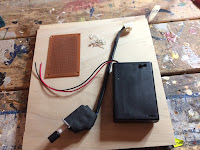



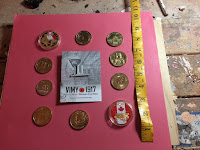


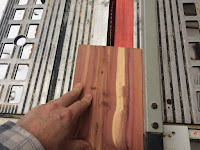


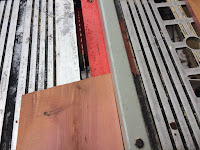










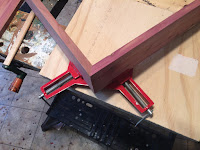




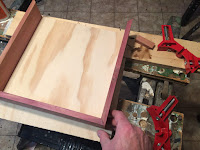





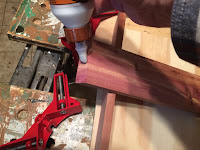

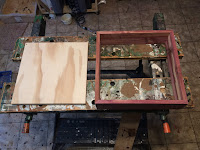




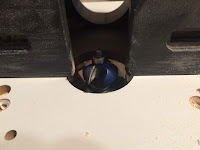











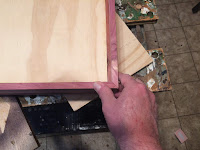
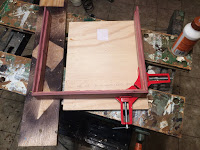














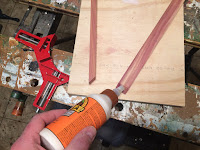

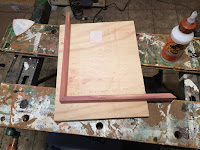





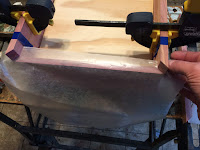

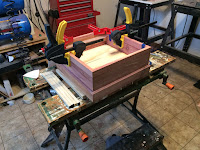





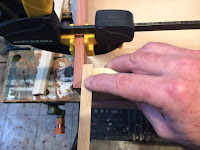
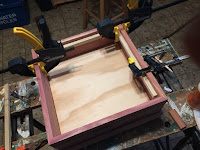
















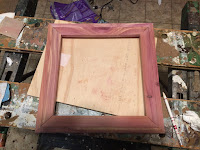






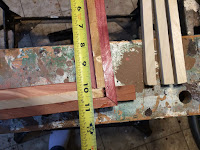






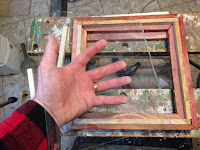
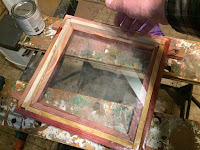












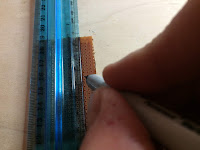



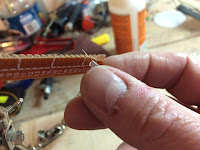

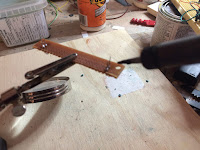
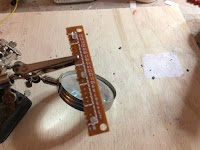




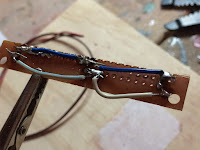
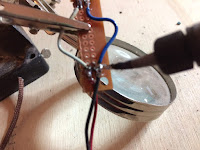


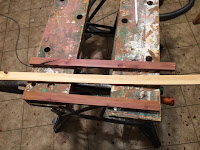

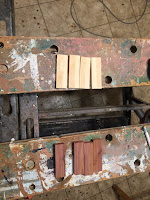






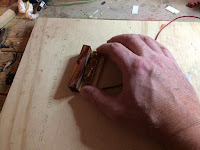
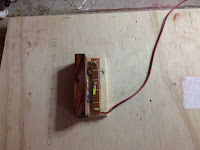




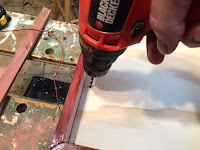
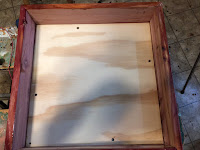











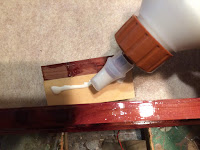
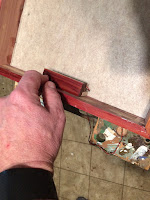









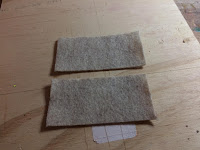








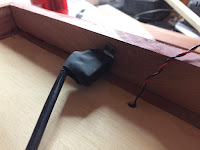
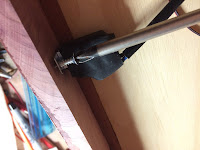
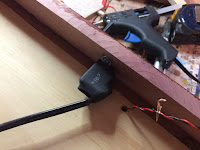






















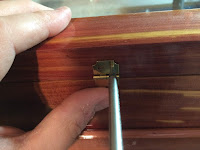

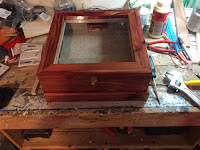
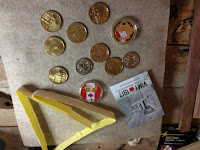





No comments:
Post a Comment